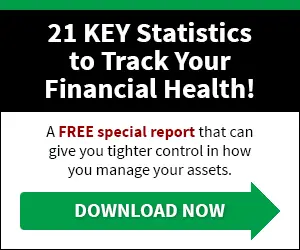New Year’s Resolution: Manage Your Debt
As the new year dawns, most Americans are probably happy to bid good riddance to 2020, a year marked by the COVID-19 pandemic, lockdowns, political brawls, and challenging economic times. Many have had to take on debt to tide them over. If you’re among them, or one of the many other Americans who pay an ever increasing portion of their paychecks to service debt, now may be the ideal time to reassess your finances and take steps to manage and reduce your debt.
I Owe, I Owe…
In America today, carrying some debt is unavoidable, and even desirable, for most households. But between mortgages, car payments, student loans, and credit cards, many Americans find themselves in over their heads. In fact, the average U.S. household carries $6,124 in credit card debt, owes $27,649 in auto loans and $46,459 in student loans, and has a mortgage balance of $197,445.1 Paying off such debt can be costly, in terms of both cash on hand and your overall financial health. So it helps to plan. Start by finding out where you stand, then take the appropriate steps to dig out.
Assessing Your Debt
How much debt is too much? The figure varies from person to person, but in general, if more than 20% of your take-home pay goes to finance non-housing debt or if your rent or mortgage payments exceed 30% of your monthly take-home pay, you may be overextended.
Other signs of overextension include not knowing how much you owe, constantly paying the minimum balance due on credit cards (or worse, being unable to make the minimum payments), and borrowing from one lender to pay another.
Here’s how you can build a clear picture of your debt situation:
- List all of your credit cards and how much you pay to them each month;
- List all of your fixed loans (such as car loans and student loans) and their monthly payments; and
- List your monthly mortgage or rent payment.
- Once you are done, add them all up. That’s your total monthly debt load.
If you find that you’re overextended, don’t panic. There are a number of steps you can follow to eliminate that debt and get yourself back on track.
Begin With a Budget
The first step in eliminating debt is to figure out where your money goes. This will enable you to see where your debt is coming from and, perhaps, help you to free up some cash to put toward debt.
Track your expenses for one month by writing down what you spend. You might consider keeping your ATM withdrawal slip and writing each expense on it until the money is gone. Hang on to receipts from credit and debit card transactions and add them to the total.
At the end of the month, total up your expenses and break them down into two categories: essential, including fixed expenses such as mortgage/rent, food, and utilities, and nonessential, including entertainment and meals out. Analyze your expenses to see where your spending can be reduced. Perhaps you can cut back on food expenses by bringing lunch to work instead of eating out each day. You might be able to reduce transportation costs by taking public transportation instead of parking your car at a pricey downtown garage. Even utility costs can be reduced by turning lights off, making fewer long-distance calls, or turning the thermostat down a few degrees in winter.
The goal is to reduce current spending so that you won’t need to add to your debt and to free up as much cash as possible to cut down existing debt.
Three Steps to Reduce Debt
Once you’ve got your budget settled, you can begin to attack your existing debt with the following steps.
Pay off high-rate debt first. The higher your interest rate, the more you wind up paying. Begin with your highest-rate credit cards and eliminate the balance as aggressively as possible. For example, assume you have two separate cards, each with a $2,000 balance, one charging 20% interest, the other 8%. By paying the maximum you can afford on the higher rate card, and the minimum on the lower-rate card until the higher-rate card is fully paid off, you will be able to reduce your overall interest costs — perhaps significantly over time.
Transfer high-rate debt to lower-rate cards. Consolidating credit card debts to a single, lower-rate card saves more than postage and paperwork. It also saves in interest costs over the life of the loan. Comparison shop for the best rates, and beware of “teaser” rates that start low, say, at 6%, then jump to much higher rates after the introductory period ends. You can find lists of low-rate cards online from sites such as CardTrak and Bankrate.
If you can only find a card with a low introductory rate, maximize the value of that low-interest period. By paying off your balance aggressively, you will reduce the balance more quickly than you will when the rate goes up.
You can also contact your current credit card companies to inquire about consolidation and lower rates. Competition in the industry is fierce, and many companies are willing to lower their rates to keep their customers. Even a percentage point or two can make a difference with a sizable balance.
Borrow only for the long term. The best use of debt is to finance things that will gain in value, such as a home or an education, or big-ticket necessities, like a washing machine or a computer — assets that will still be around when the debt is paid off. Avoid using your credit card for concert tickets, vacation expenses, or meals out. By the time the balance is gone, you’ll have paid far more than the cost of these items and have nothing but memories to show for it.
By analyzing your spending, controlling expenses, and establishing a plan, you can reduce — and perhaps eliminate — your debt, leaving you with more money to save today and a better outlook for your financial future.
1Source: Nerdwallet.com, 2019 American Household Credit Card Debt Study, updated June 2020. Balances are as of June 2020 for households carrying that type of debt.
This material was prepared by LPL Financial. This material is for general information only and is not intended to provide specific advice or recommendations for any individual. There is no assurance that they views or strategies discussed are suitable for all investors or will yield positive outcomes. Investing involves risks including possible loss of principal. Any economic forecasts set forth may not develop as predicted and are subject to change. All performance referenced is historical and is no guarantee of future results.




